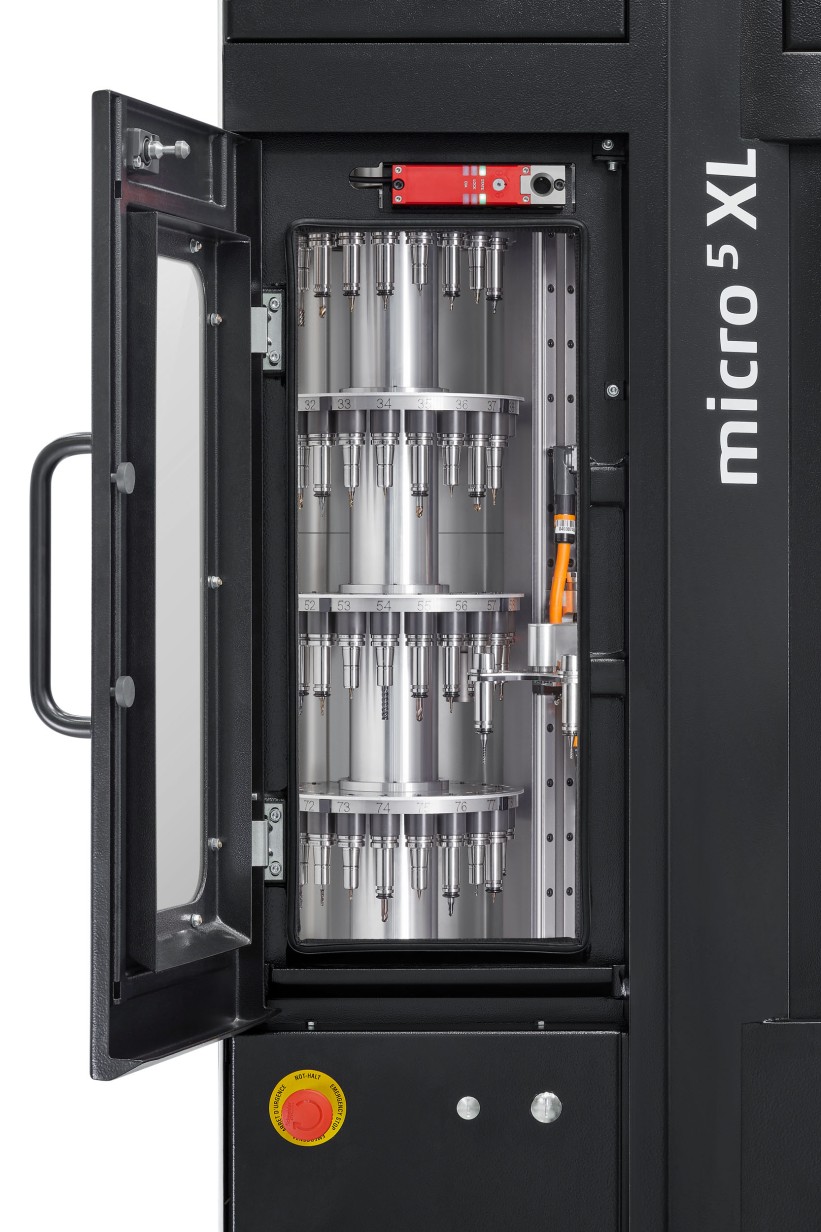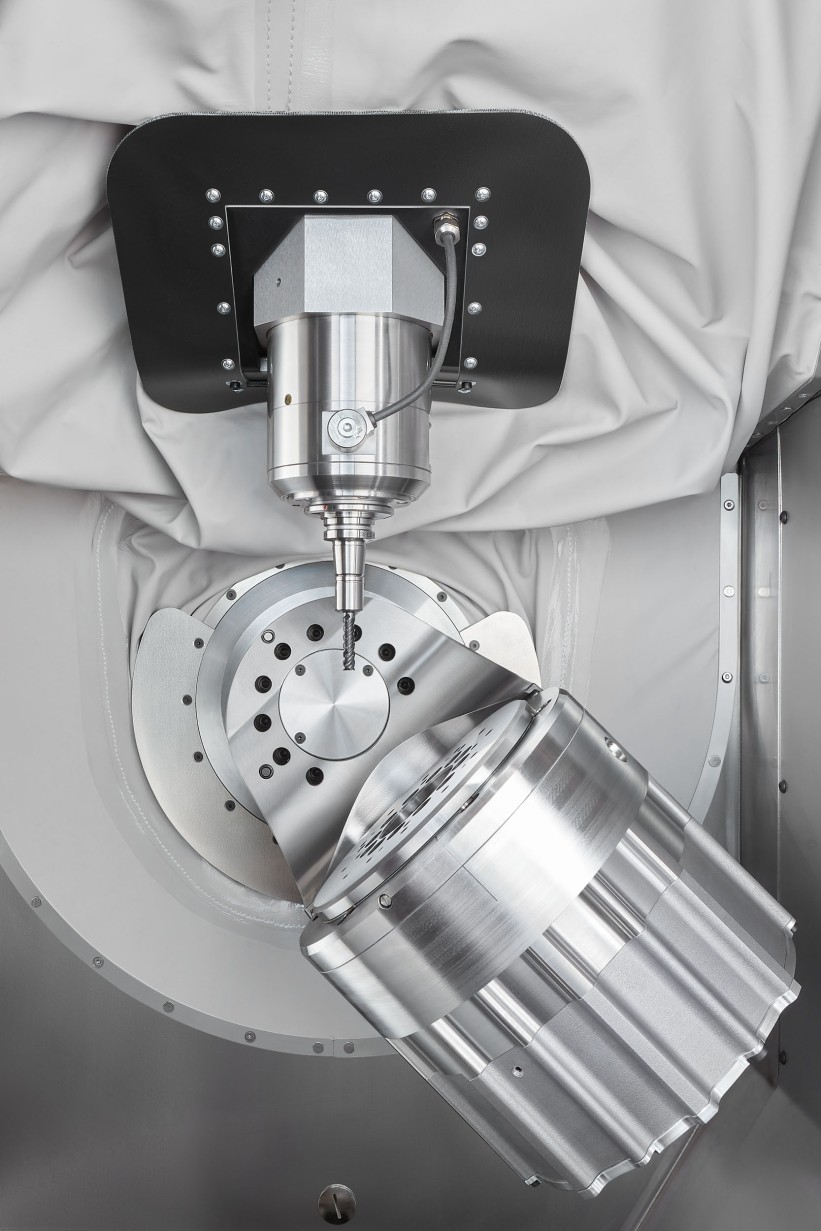On the stage in the CHIRON Group machine hall, CTO Dr.-Ing. Claus Eppler and Senior Product Manager Michael Wurster provided exciting insights into the development project. In an interview with Matthias Rapp, Vice President Global Marketing, they also talked about challenges, technological priorities and the benefits offered by the new micro machine.
Dr. Eppler, what does the Micro5 XL mean for the CHIRON Group? And why is now the right time for this new machining center?
The markets are changing, and all players know how dynamic things are at the moment. With the Micro5 XL, we are responding to the increasing demand for high-precision solutions for smaller workpieces – for example for medical or precision technology – in a targeted manner and, in my opinion, at exactly the right time. We now have the right product for this.
As CTO, you are the »top developer« and responsible for the technical direction. What was the main development goal for the Micro5 XL?
We introduced the Micro5 a few years ago. It has proven itself in many applications, but reaches its natural limits on larger workpieces and higher spindle power. Our development goal was to resolve precisely these limitations, with more working area and more spindle power. In short, with more power on the workpiece – with the same precision and dynamics. High-speed cutting has of course also been considered and integrated. So everything is XL, yet clearly based on the successful Micro5 concept.
»It's not just the technology that's special – it's the team effort behind it that enabled us to realize the Micro5 XL project in record time.«
Dr. Claus Eppler, CTO
Mr. Wurster, let's take a look at the technical implementation. What specifically distinguishes the Micro5 XL from other solutions on the market?
Well, how often do you actually have the opportunity to define a new class of machine and launch it on the market? Of course, there are many machining centers that also process workpieces up to 120 mm. The emphasis is on »also«, as these systems usually have a significantly larger footprint. Conversely, there are very compact machines that can only process smaller parts. With the Micro5 XL, we have closed this very gap – very compact design, but at the same time a significantly larger working area.
Dr. Eppler, when you look at and into the ready-for-sale micro machine, what were the particular challenges during development?
The biggest challenge was actually to fit everything into a minimum of space – in the working area and above all in the overall installation space of the Micro5 XL. On the one hand, it was necessary to integrate all the units and, on the other, to realize the high dynamics which is a typical distinguishing feature not only of our now two micro machines. We succeeded. HSC machining, as already mentioned, is integrated and the variety of components has been greatly expanded. So all the development goals have been achieved.
Mr. Wurster, is there a technical detail, a feature, that you and the development team are particularly proud of?
Yes, the maximum dynamics. We achieve jerk values of up to 900 m/s³, which is huge. This enables outstanding web and processing speeds with maximum precision. And all of this in a very compact, resource-efficient design – overall, and in this combination, that is something really special.
How has customer feedback been incorporated into the development?
Michael Wurster: Customers were part of the process right from the start. At a very early stage, we talked to target users about their requirements and also about specific problems in day-to-day production. We have taken these requirements, structured them and integrated them into our concept. What we presented at OPEN HOUSE 2025 is the result of this exchange – and the feedback from the premiere audience confirms that we have chosen the right approach.
»Workpiece cubatures of up to 120 mm on a footprint of less than two square meters with maximum dynamics and jerk values of up to 900 m/s³ – that's high-speed performance like never before.«
Michael Wurster, Senior Product Manager
Dr. Eppler, one last question: Apart from the direct feedback from the premiere audience, what makes you most proud?
Of course the Micro5 XL itself, but I'm most proud of the team. The development team, product management, many internal departments and our partners have achieved great things together in a short space of time. The close cooperation with our customers has also ensured that we have not only realized a technically impressive product, but also a market-driven product with which our customers will really be able to realize a new dimension in micromachining in the future.
Mr. Wurster, to conclude, let's take a look ahead: What's next for the Micro5 XL? Will there be coordinated automation solutions?
Without giving too much away: At EMO Hannover 2025, we will be presenting the Micro5 XL in combination with customized automation, which still has a very compact footprint. And, a central aspect for daily practice, consistent and intuitive operating logic.
Micro5 XL – the most important data
| Machining cube up to |
120 x 120 x 120 mm |
| Travel X – Y – Z |
170 – 140 – 120 mm |
| Rapid feed X – Y – Z |
30 – 30 – 30 m/min |
| Axis acceleration X – Y – Z |
15 – 15 – 20 m/s² |
| Jerks up to |
900 m/s³ |
| Chip-to-chip time |
3.5 s |
| Milling spindle speed |
40,000 | 50,000 min-1 |
| Tool capacity max. |
100 tools |
| B axis swivel range |
-90° to +120° |
| Footprint incl. periphery |
only 1.7 m² |
| Weight approx. |
2,300 kg |
Find out what else the CHIRON Group has in store for EMO Hannover 2025 here.


